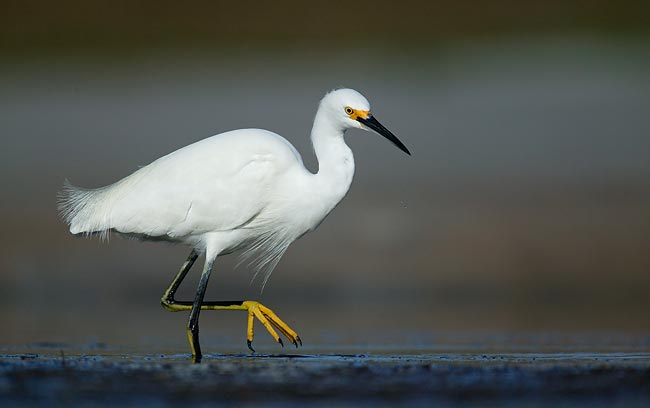The "Stalk and Spear"
To watch a great blue heron hunt fish is to watch a very intensely focused bird that must have been trained by Yoda himself, which in this case is a green heron; also patient and intense, but green and secretive. Great blue herons will stare into the water with great patience, waiting for just the right moment. And when a fish swims just a little too close...
Yeah, it's gotta suck to get digested alive.
This video was taken at a favorite spot for Mr. Nature Geek and I, the duck pond at the University of South Florida. We discovered that this great blue heron was not only Jedi-like in his hunting skills, but in mind as well. He learned that if he came down to the water's edge as people were feeding the ducks, that fish would also inevitably surface for the flung bread pieces. He had learned how to fish! Clever he is, yes, hmmm! (That was my Yoda impression. It doesn't come across as well through text.)
The "Dance Around like a Madman"
Clearly she's contemplating her next dance routine.
Reddish egrets are the opposite end of the spectrum when it comes to obtaining a meal, forgoing calm-like zen for dancing around with all they've got. The idea here is that by running round, the reddish egret scares small fish out of their hiding spots, making it easier for the dancing diva to get her lunch.
I was was fortunate enough to witness a young reddish egret (no more than a month or two old) practicing its dance on dry land. It ran back and forth, wings extended, until it danced up to a juvenile brown pelican, who looked less than impressed. It almost seemed like the young egret's happy balloon was burst, as it stopped dead in its tracks. Hey little guy, I enjoyed your routine!
The "Have a Big Friend" Approach
Are you gonna eat that?
The cattle egret has found friends in high places that help it find its next meal. In its native Asia, Africa, and Europe, the cattle egret evolved its feeding strategy into following large animals, who stir up insects and other small prey as they browse. Its relationship with large ungulates such as cattle is how the egret got its name. This hunting strategy is very similar to the reddish egret's, except with far less work required on the cattle egret's behalf. These days, cattle egrets have learned to follow behind more modern "cattle":
The Shake a Leg / Fly and Drag
Sing it with me now!
"These toes are made for fishin', and that's just what they'll do.
One of these days these toes are going to shuffle around in the water like fishing lures so that I can eat all of you!"
I think that last stanza was too long. But yup, that's what the snowy egret does alright; shuffle along in the water shaking its legs and toes, hoping that fish will be attracted to or scared by their bright yellow digits. In the meantime from a human's perspective, it looks like the bird is tentatively walking on ice after consuming about 6 Red Bulls.
Snowy egrets have a second technique to employ their yellow tootsies while hunting, the Fly and Drag. In this method, the egret flies across the water, dragging its toes. This lures fish to the surface, where the snowy egret plucks them from the water as it flies along.
Each of these birds have different foraging techniques, and not only do they work well for the bird, but they're a lot of fun for this human to watch as well. Many of these species are found across the United States, not just down in Florida, so keep your eyes open for these talented hunters!
Oh, and speaking of my Dr. Seuss tribute up in the title there, if you haven't had the chance to see "The Lorax" yet, I highly recommend it. It's Nature Geek approved!





Just the other day (being lucky to live in Florida) we saw a heron in our pond catch a fish just a little to big for him and watched him wrestle with it. It's pretty incredible to watch.
ReplyDelete